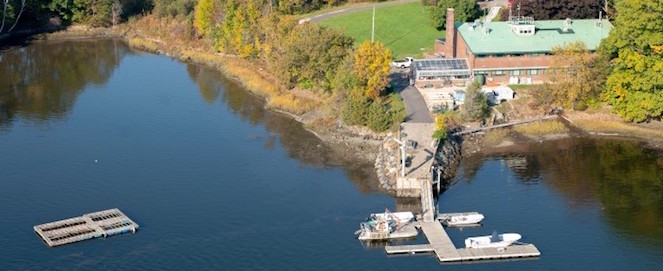
Jackson Estuarine Laboratory
Seasonal growth and reproduction of estuarine fucoid algae in New England
Abstract
Estuarine populations of Ascophyllum nodosum (L.) Le Jolis and Fucus vesiculosus L. var. spiralis Farlow from the Piscataqua River of the Great Bay Estuary System (New Hampshire-Maine) showed their maximum growth during the spring and fall of two consecutive years. The maximum growth rates (in terms of elongation) for Ascophyllum and Fucus were 3.5 and 3.6 cm/month, respectively, during 1973, and 3.2 and 2.3 cm/month in 1974. The average length of whole Fucus fronds showed a trend towards longer plants during the early spring and late summer-fall, while the average weight was significantly greater in the spring and early summer. Ascophyllum showed a distinct reproductive periodicity, with a maximum in March or April of both years; after the spring period of maximum reproduction, the receptacles dehisced simultaneously and the plants were vegetative during the summer. The reproductive periodicity of Fucus was not so distinct as that of Ascophyllum; even so, its maximum reproduction was in April of both years. The level of reproduction for Ascophyllum populations was three times greater in 1974 than in 1973. The reproduction and growth of the two fucoid algae are related to seasonal variations in temperature and light.
Publication Date
12-1976
Journal Title
Journal of Experimental Marine Biology and Ecology
Digital Object Identifier (DOI)
Document Type
Article
Recommended Citation
Mathieson, A.C., J.W. Shipman, J.R. O'Shea, and R.C. Hasevlat. 1976. Seasonal growth and reproduction of estuarine fucoid algae in New England. Journal of Experimental Marine Biology and Ecology 25:273-284. (Contribution No. 821 in the Agricultural Experiment Station Series)
